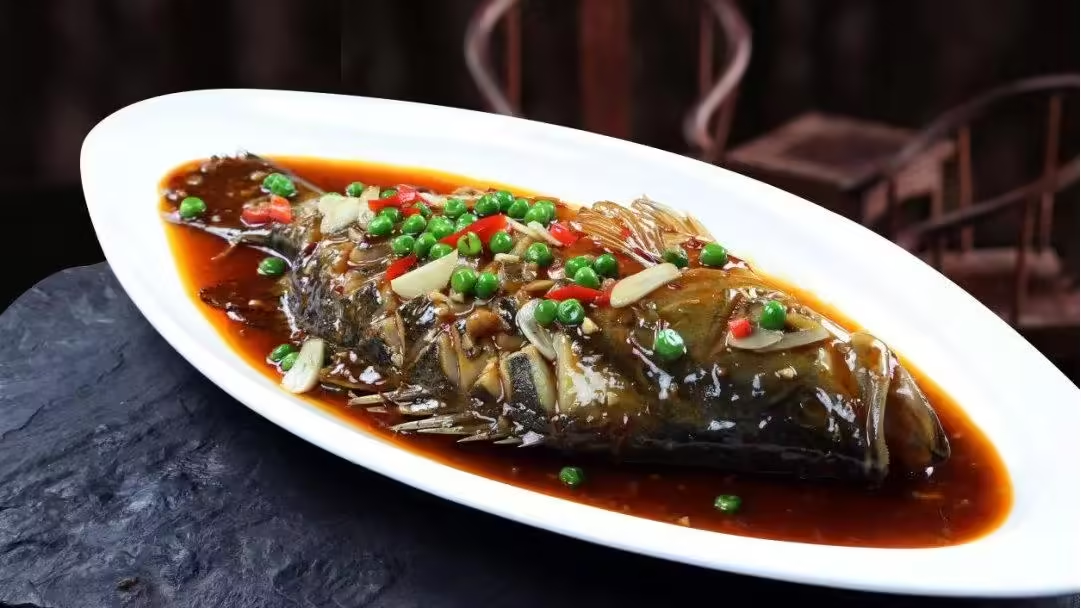Huizhou cuisine, one of China’s eight major culinary traditions, stands out for its rich flavors and distinct style, deeply rooted in the local culture and environment of the Huizhou region. With origins tracing back to the Qin and Han dynasties, Huizhou cuisine grew significantly during the Tang and Song dynasties, reaching its peak of popularity in the Ming and Qing dynasties. The rise of Huizhou merchants (徽商) during this period played a key role in spreading the cuisine across China, making it one of the most influential regional cuisines at the time.
Embracing Local Ingredients
A hallmark of Huizhou cuisine is its use of locally sourced ingredients. The region’s rich natural resources, including an abundance of mountain delicacies, river fish, and poultry, contribute to the freshness and unique flavors of Huizhou dishes. These ingredients not only reflect the region’s distinct character but also enhance the overall taste of the dishes, often described as fresh, rich, and aromatic.
When examining a Huizhou menu, you’ll quickly notice how integral local produce is to its cuisine. Dishes often incorporate wild herbs, bamboo shoots, and various types of freshwater fish. The cuisine’s emphasis on these ingredients ensures that each dish carries the authentic flavors of Huizhou, with a focus on preserving the natural taste of the ingredients.
The Story of “Smelly Mandarin Fish” (臭鳜鱼)
One of the most iconic dishes in Huizhou cuisine is “smelly mandarin fish” (臭鳜鱼), which has a fascinating history that dates back more than 200 years. According to legend, during the winter months, fishmongers would transport mandarin fish from the Yangtze River to the mountainous regions of Huizhou. To preserve the fish during the long journey, they would layer the fish in barrels with a sprinkle of saltwater, preventing spoilage.
After seven or eight days of travel, the fish would arrive in Huizhou with their gills still red and scales intact. However, the fish would emit a distinct odor that was not quite foul but unique. Upon cleaning and cooking the fish in hot oil and simmering it slowly, the unpleasant smell would vanish, leaving behind a dish that was surprisingly fragrant and delicious. The fish’s tender texture and savory flavor made it a local favorite, and it remains a prized delicacy to this day.
The Spread of Huizhou Cuisine
The popularity of dishes like “smelly mandarin fish” grew in part due to the influence of Huizhou merchants. During the Ming and Qing dynasties, Huizhou merchants traveled extensively across China, often carrying preserved mandarin fish with them. Not only was the fish convenient to transport due to its long shelf life, but it also provided the merchants with a comforting taste of home while they were far away on business.
As these merchants ventured into various parts of China, they introduced Huizhou flavors to different regions, spreading the fame of Huizhou cuisine far and wide. Over time, the cuisine gained a reputation for its distinctive taste, earning a place among the most celebrated of China’s regional food traditions.
A Timeless Culinary Tradition
Huizhou cuisine continues to captivate diners today with its unique combination of locally sourced ingredients, traditional cooking methods, and cultural significance. Whether savoring a dish like smelly mandarin fish or exploring other signature dishes, you’ll find that Huizhou cuisine offers a taste of the region’s history, environment, and vibrant local culture. Its enduring appeal lies in its ability to blend practicality with extraordinary flavor, making it a truly remarkable culinary tradition.

